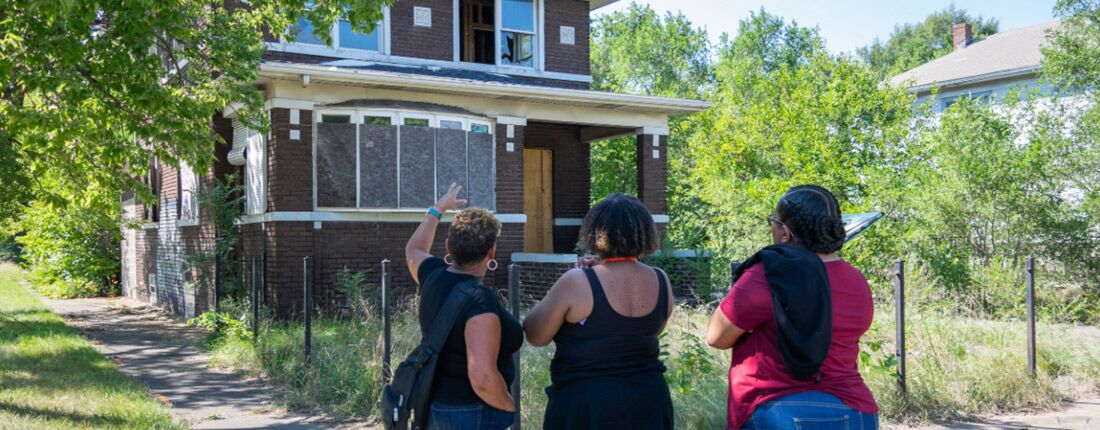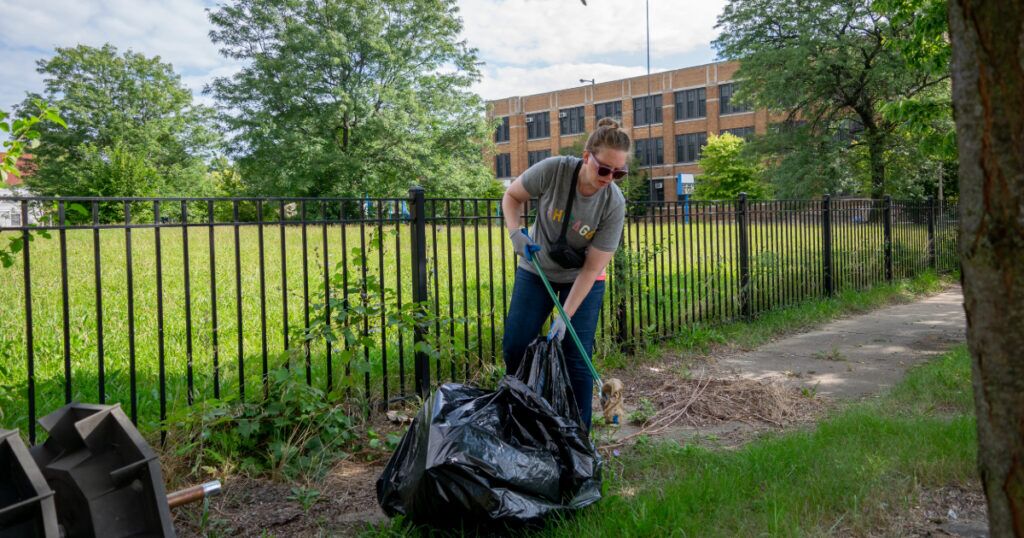

First, it’s important to understand the difference between a neighborhood with just “a few” vacant properties, and systemic vacancy.
In a neighborhood with a strong housing market, there will be fewer harmful, long-term vacant properties because their owners have more incentive to maintain or sell their property, and buyers have more incentive to buy.
But when a community has experienced severe population or economic decline, natural disasters, intergenerational poverty, or a history of racist policies and disinvestment, vacant and deteriorated properties are often widespread. A property owner is more likely to abandon rather than sell a house if the cost to fix it up and pay off property taxes is more than what the market has decided the house is worth. More abandoned properties worsen living conditions for the people who remain, hurting the economy, community, housing stock, and residents, which fuels more abandonment over the decades. This is the cycle of “systemic vacancy.”
As a result of this long-term decline, local governments in places grappling with systemic vacancy don’t have resources proportional to the scale of the problem.

Dealing with an abandoned home or vacant lot that’s harming the community isn’t as simple as you might think. Laws in the United States are designed to protect an individual’s private property. Even if that property owner walks away, stops paying property taxes, and lets the property fall into disrepair, someone can’t simply say “this is now mine because you weren’t using it.”
Once a property becomes abandoned and tax-delinquent, some of the things local government have to do include tracking down a property’s owner (often difficult), serving them legal notices, auctioning the property or right to collect the owed debt through a tax sale (or whatever state law dictates), and eventually transferring it to new, responsible ownership. This process takes years.
This all might sound discouraging to the person who just wants to do something about the vacant house next door, but as a community resident you have one of the most important roles in fighting systemic vacancy: Demanding change from your local government because you deserve to live in a safe, vibrant neighborhood.

Report vacant properties: Report unsecured vacant properties, illegal dumping, overgrown vacant lots, and other building safety hazards to your local code enforcement department. Many code enforcement departments keep a database of vacant properties in their community so that they can identify repeat offenders and track fines and public costs associated with abating issues on the property. Even if your code enforcement department doesn’t have the resources to address every property, by reporting a vacant house you’re doing the city—and your neighbors—a favor by making it clear that the community cares and deserves better. Download this worksheet to help you identify who’s in charge of what in your community.
Join or start a community group: Getting together with your neighbors harnesses power in numbers to raise concerns about a specific property or broader neighborhood concerns. See page 5 of the Resident Workbook for tips on how to find local groups to get involved with. If your community doesn’t have any neighborhood groups, consider starting one; download our template neighborhood group strategy.
Organize vacant lot cleanup and maintenance: If there’s a specific lot that’s consistently overgrown and accumulating litter, reach out to your local elected official, neighborhood group, or department of public works to organize a cleanup or ongoing volunteer property maintenance. Research shows that when vacant lots are intentionally maintained, they become less attractive to illegal dumping.
Remember that even if it seems like “nobody” owns the property, you should still treat it like private property and avoid actions that could put you at risk of physical harm or legal trouble.
Attend and raise issues at community meetings: Your local government likely holds public meetings where all manner of community issues, including economic revitalization and public safety, are discussed. Find out when and where public community meetings are held and attend. This will help you meet residents who share your concerns and give you an opportunity to ask policymakers why nothing has been done about a vacant property you’ve been reporting for years, for example.
Buy a vacant property and turn it into a community asset: Land is finite, and vacant property is an untapped resource. There are dozens of examples of residents and community organizations turning vacant lots into gardens, pocket parks, green stormwater infrastructure, gathering spaces, and other creative places. You can buy vacant properties from a land bank (if your community has one), and some cities even have “Mow to Own” programs that allow residents to buy the vacant lot next to their property for a nominal fee if they’ve already been maintaining it. Download this worksheet of project ideas for what to do with a vacant lot and check out our databases of vacant land and creative placemaking projects.
You deserve to live in a neighborhood without dangerous vacant, abandoned, and deteriorated properties, and your voice and advocacy are your greatest strengths in the fight for community revitalization. For more information on how you can get involved in community revitalization, download The Resident’s Workbook for Dealing with Vacant Homes and Lots and sign up for our monthly newsletter Vacant to Vibrant for more educational resources and opportunities for community leaders and policymakers.